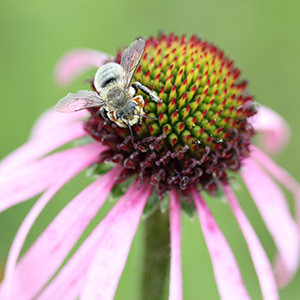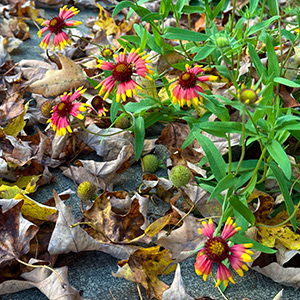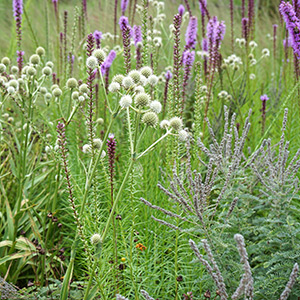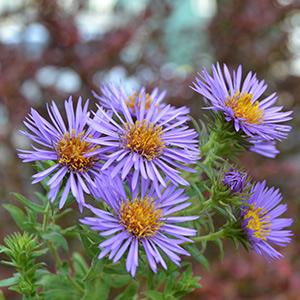Plants form the foundation of good habitat for most insects, including pollinators. Flowering native plants provide the nectar and pollen that pollinators eat, the vegetation that butterfly caterpillars feed on, and nesting resources for many bees. Growing the right flowers, shrubs, and trees is the foundation of your pollinator habitat.
Use plants native to your region
Numerous studies have shown that native plants support more pollinators and other invertebrate species than non-native plants.
Pick a diversity of plants and bloom times
Ensure overlapping bloom times from spring into fall. Different pollinator species emerge at different times of year, and good pollinator habitat will provide food for them all season long. Spring flowering plants are particularly important for emerging bumble bee queens, and late summer flowering plants provide resources for newly hatched queens who are about to overwinter.
“Right plant, right place”
Make sure you select plants that will grow well at your site. Consider sun exposure, water availability, and soil type.
Avoid cultivated, ornamental plants in your pollinator habitat
Double-flowered hybrids or other ornate varieties often produce little or no pollen or nectar. Also, many pollinators use visual cues to identify flowers; those identifying patterns can be lost if plants are bred with a different color.










